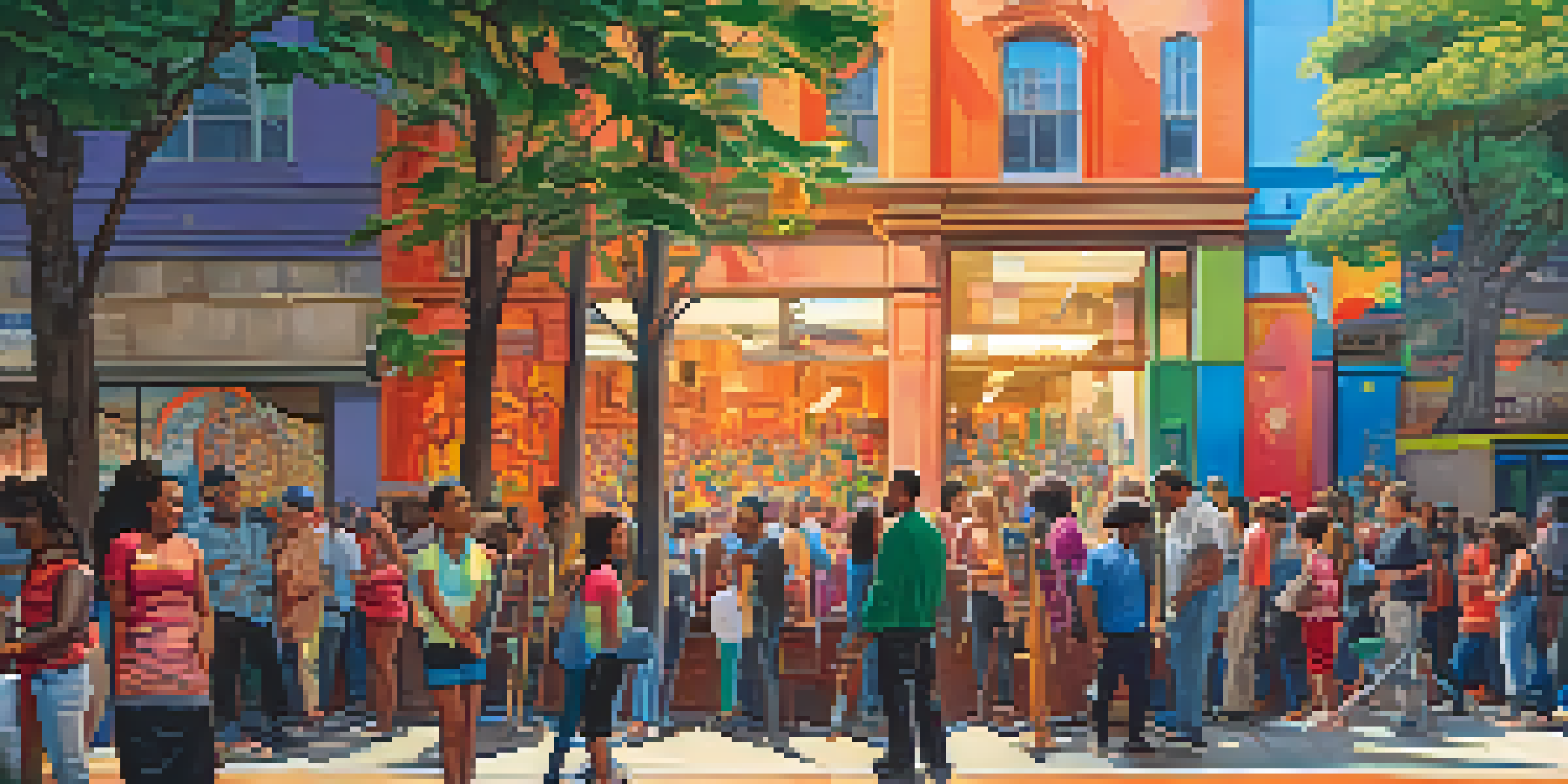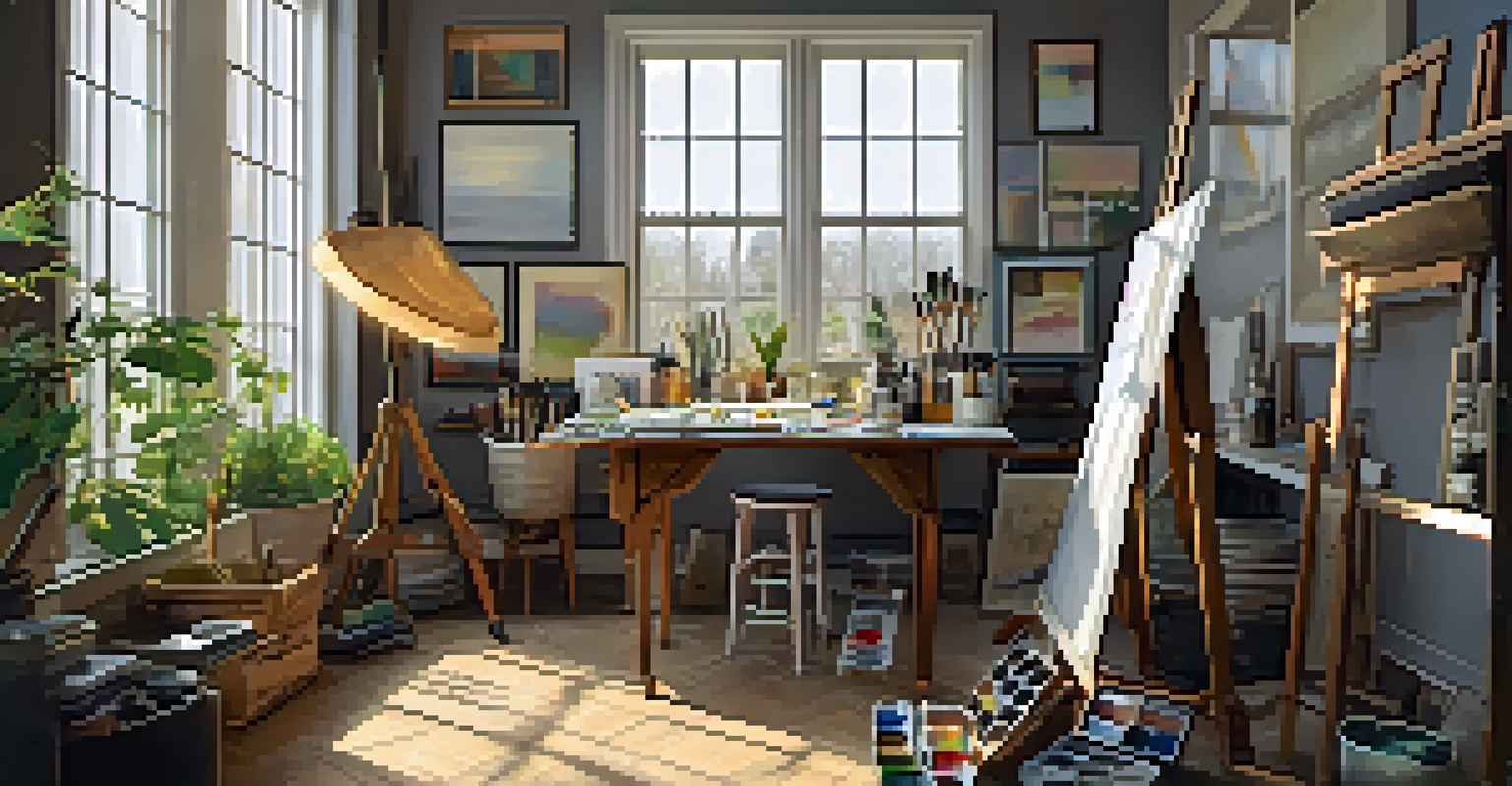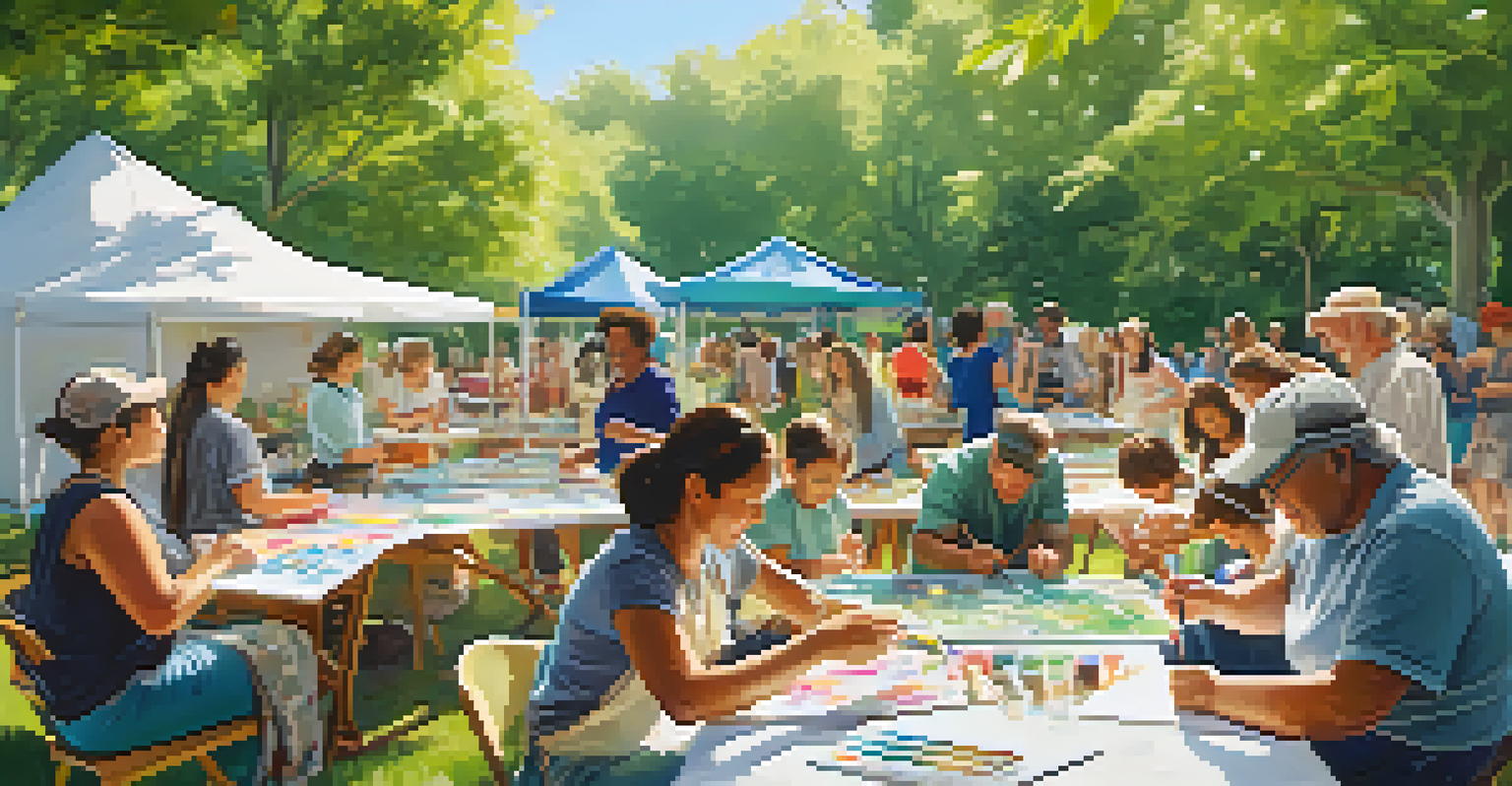The Myth of the Artist: Creative Identity and Cultural Narratives

Understanding the Myth of the Artist in Society
The myth of the artist often portrays them as solitary geniuses, working in isolation to create masterpieces. This narrative not only elevates their work but also romanticizes the struggles artists face. However, it's crucial to recognize that creativity often thrives in collaborative environments, where ideas bounce off one another and evolve.
Art is not what you see, but what you make others see.
By examining this myth, we can begin to see how it impacts both the artists themselves and the way society perceives creativity. Many aspiring artists feel pressured to conform to this stereotype, which can stifle their unique voices and limit their potential. Instead of celebrating individual expression, the myth can create barriers to authentic artistic exploration.
Additionally, this narrative simplifies the complex realities of artistic identity, suggesting that all artists fit into a narrow mold. In reality, artists come from diverse backgrounds and experiences, each bringing unique perspectives to their work. It’s this richness that truly defines the creative landscape, not the solitary genius archetype.
Cultural Narratives and Their Impact on Artistic Identity
Cultural narratives shape our understanding of what it means to be an artist, often dictating the standards by which creativity is judged. These narratives can either empower artists or constrain them, influencing everything from funding opportunities to public recognition. For instance, traditional narratives often celebrate artists who fit conventional molds, sidelining those who don’t.

Moreover, these narratives can perpetuate stereotypes that limit the visibility of underrepresented groups in the arts. When we only highlight certain types of artists, we inadvertently reinforce a narrow view of creativity that excludes a wealth of talent. This can lead to a cycle where only specific narratives gain traction, leaving many voices unheard.
Artists Thrive in Community
Collaboration and support within artistic communities enhance creativity and allow for diverse perspectives to flourish.
Understanding these cultural narratives is essential for fostering a more inclusive artistic community. By challenging existing narratives and advocating for diverse representations, we can create an environment where all artists feel valued. This shift not only enriches the artistic landscape but also broadens the audience's appreciation of creativity in its many forms.
The Role of Community in Shaping Creative Identity
Community plays a vital role in shaping an artist's identity, providing support, inspiration, and collaboration opportunities. Artists often draw strength from their surroundings, whether that be through fellow creatives, mentors, or local cultural movements. This sense of belonging can enhance their creativity and push them to explore new avenues.
The greatest fear in the world is of the opinions of others. The moment you are unafraid of the crowd, you are no longer a sheep; you become a lion.
Consider the vibrant art scenes found in cities like New York or Berlin, where artists thrive in a network of collaboration and mutual support. These communities foster shared experiences that can spark innovative ideas and challenge traditional artistic boundaries. When artists come together, they create a rich tapestry of influences that can lead to groundbreaking works.
By embracing community, artists can break free from the isolating myth of the solitary genius. They can share their struggles and successes, enriching their work and expanding their perspectives. Ultimately, it’s this interconnectedness that fuels creativity and drives the evolution of art in society.
Redefining Success Beyond Traditional Metrics
Traditional metrics of artistic success, such as gallery shows or critical acclaim, can overshadow more personal definitions of achievement. Many artists measure success in terms of personal growth, community impact, or the joy of creation itself. By broadening our understanding of what it means to 'succeed' as an artist, we can celebrate diverse journeys.
For example, an artist who chooses to engage with their community through workshops may find fulfillment that eclipses any accolades they might receive. This shift in perspective opens the door for artists to pursue their passions authentically, rather than chasing external validation. Success becomes a more personal and meaningful journey.
Redefining Artistic Success
Success for artists can be measured by personal growth and community impact rather than traditional accolades.
Encouraging artists to define their own success helps dismantle the myth that equates worth with visibility or fame. When artists feel free to explore their unique paths, it fosters a richer, more varied artistic landscape. This not only benefits the artists but also enriches the cultural narrative surrounding creativity.
The Intersection of Identity and Artistic Expression
An artist's identity—shaped by factors such as culture, gender, and personal experiences—plays a crucial role in their work. This intersection of identity and expression allows artists to share their unique perspectives and challenge societal norms. Through their art, they can communicate complex narratives that resonate with diverse audiences.
For instance, artists from marginalized backgrounds often address themes of identity and representation in their work, offering insights that might otherwise be overlooked. By sharing their stories, they contribute to the broader cultural narrative, enriching the artistic community as a whole. Their experiences become a vital part of the dialogue surrounding creativity.
Recognizing the importance of identity in artistic expression encourages a more inclusive perspective on what constitutes valuable art. It invites audiences to engage with works on a deeper level, fostering understanding and empathy. Ultimately, embracing the intersection of identity and expression enriches both the artist's journey and the audience's experience.
Challenging the Stereotypes of the 'Starving Artist'
The stereotype of the 'starving artist' perpetuates the myth that artists must struggle in order to create meaningful work. This narrative not only romanticizes hardship but also discourages many aspiring creatives from pursuing their passions. By challenging this stereotype, we can shift the conversation towards the realities of sustainable artistic careers.
Many successful artists find ways to balance their creative pursuits with financial stability, proving that it is possible to thrive without sacrificing one's art. This shift in narrative allows for a broader range of experiences to be shared, encouraging emerging artists to seek fulfilling paths that support both their creative and financial well-being. This is a crucial step toward normalizing diverse career trajectories in the arts.
Challenging the 'Starving Artist' Myth
Debunking the stereotype of the 'starving artist' empowers creatives to pursue fulfilling careers without guilt.
By debunking the 'starving artist' myth, we empower artists to embrace their ambitions without guilt or shame. This change not only benefits individual artists but also enriches the overall artistic community, fostering a more realistic and supportive environment. It encourages a culture that values creativity while recognizing the importance of financial sustainability.
The Future of Artistic Identity and Cultural Narratives
As we move forward, the conversation around artistic identity and cultural narratives is evolving. Artists are increasingly challenging traditional norms and redefining what it means to be creative in today's world. This shift opens up exciting possibilities for the future of art, allowing for more diverse voices to emerge and flourish.
Emerging technologies, such as social media and digital platforms, are democratizing access to artistic expression. Artists can now share their work directly with audiences, bypassing traditional gatekeepers and fostering a more inclusive artistic landscape. This newfound accessibility allows for a wider range of narratives to be told, enriching the cultural tapestry.

By embracing this evolution, we can create a future where creativity is celebrated in all its forms. As we continue to challenge existing myths and redefine artistic identity, we pave the way for a more vibrant and diverse artistic community. This not only benefits artists but also enhances the cultural experience for audiences everywhere.